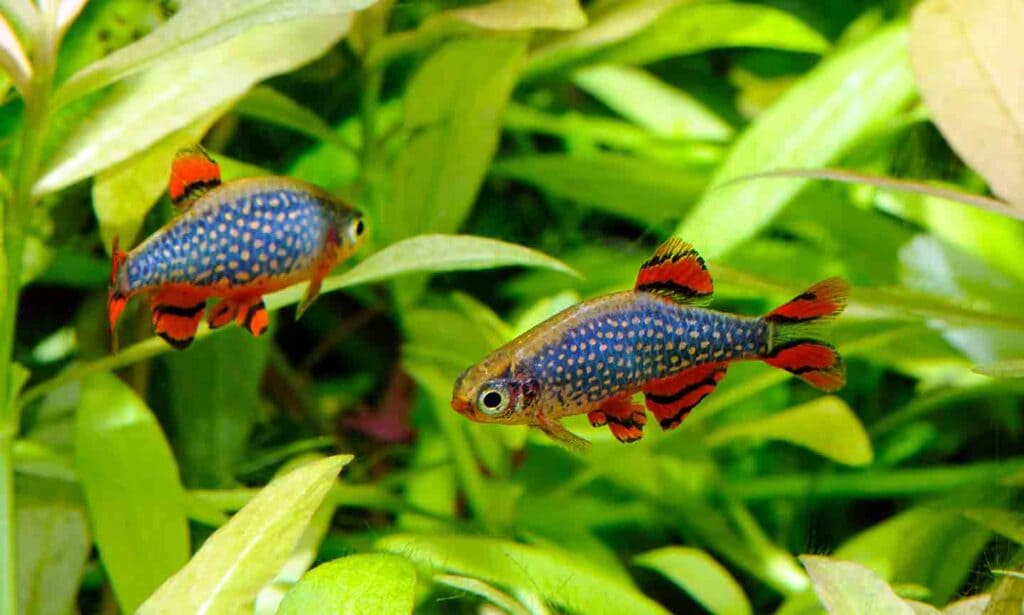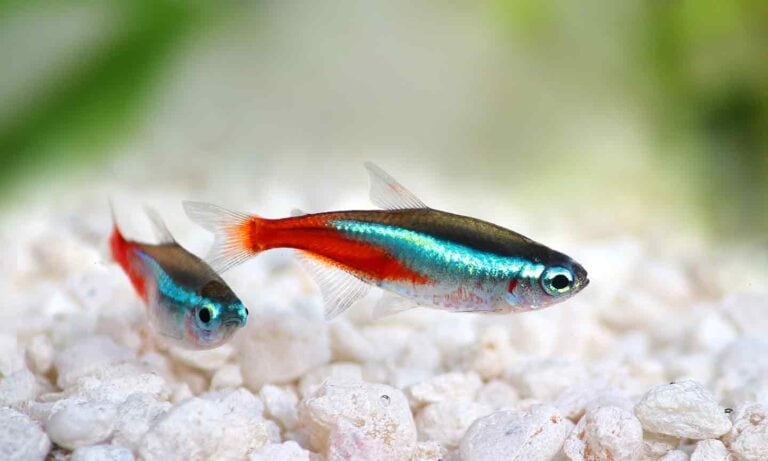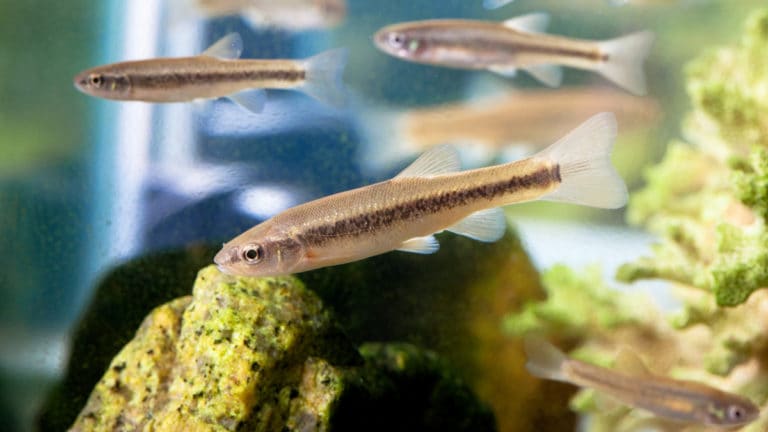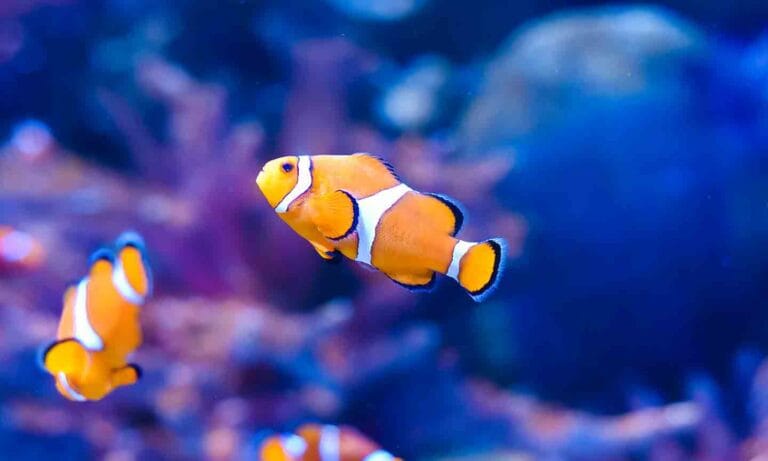You’ve learned the basics about keeping a freshwater aquarium and picked out your tank and all the necessary supplies. The only thing left is to choose your fish. Whether you’re a beginner aquarium hobbyist or stocking a community tank, there’s nothing wrong with starting small.
We talked to expert aquarists to compile this list of over two dozen of the best small aquarium fish for freshwater tanks.
The 25 Best Freshwater Fish for Small Aquariums
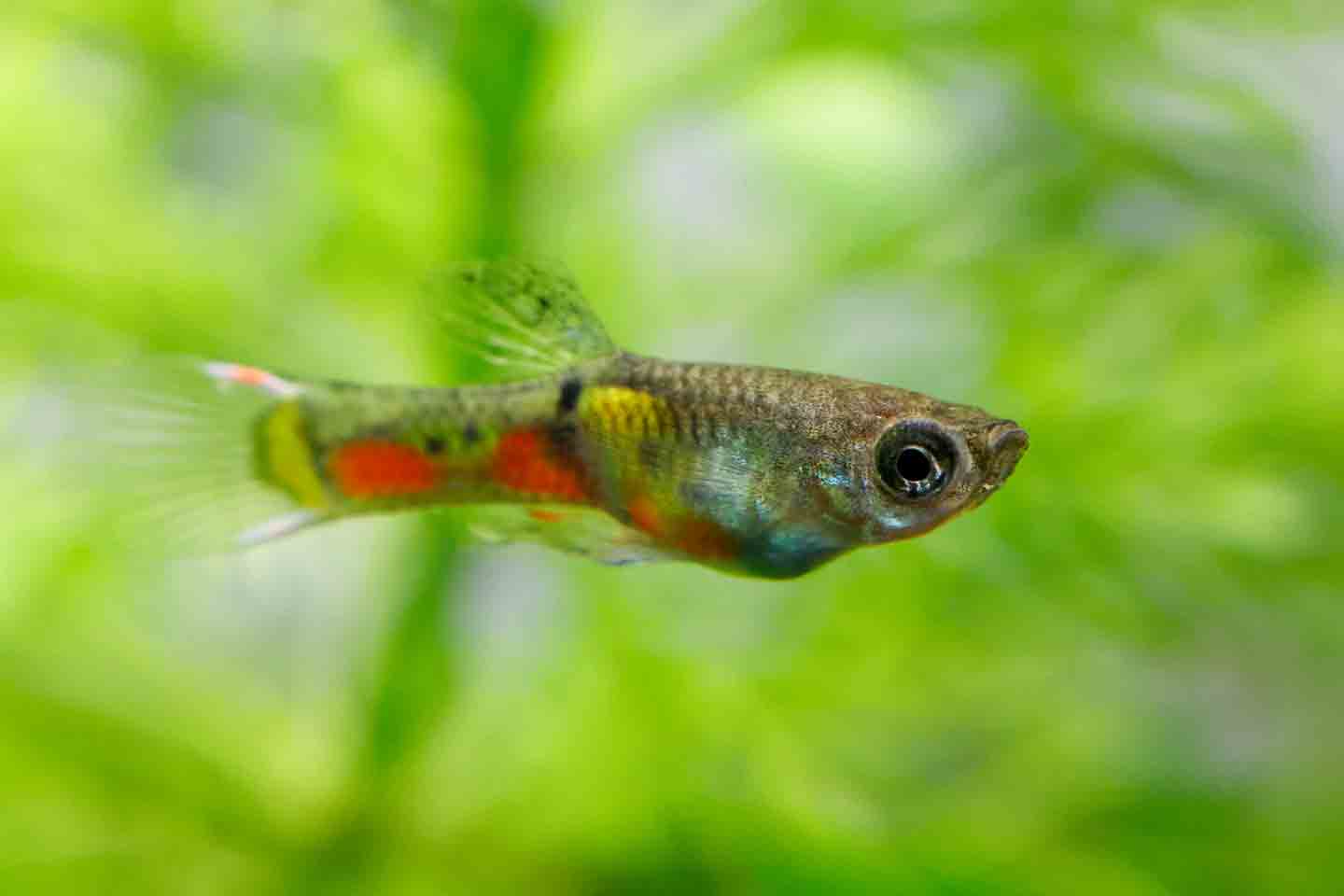
1Endler’s Livebearer
- Scientific name: Poecilia wingei
- Adult size: 1-2 inches
- Life expectancy: 2-3 years
- Best tank mates: Small, peaceful fish
Guppies are often top of mind for beginner-friendly freshwater fish but Endler’s livebearers are equally appropriate. They’re known for being quite hardy, so they may tolerate the inconsistent water parameters common in new tanks. Endler’s livebearers come in a wide range of colors and can be successfully kept (and bred) with guppies.
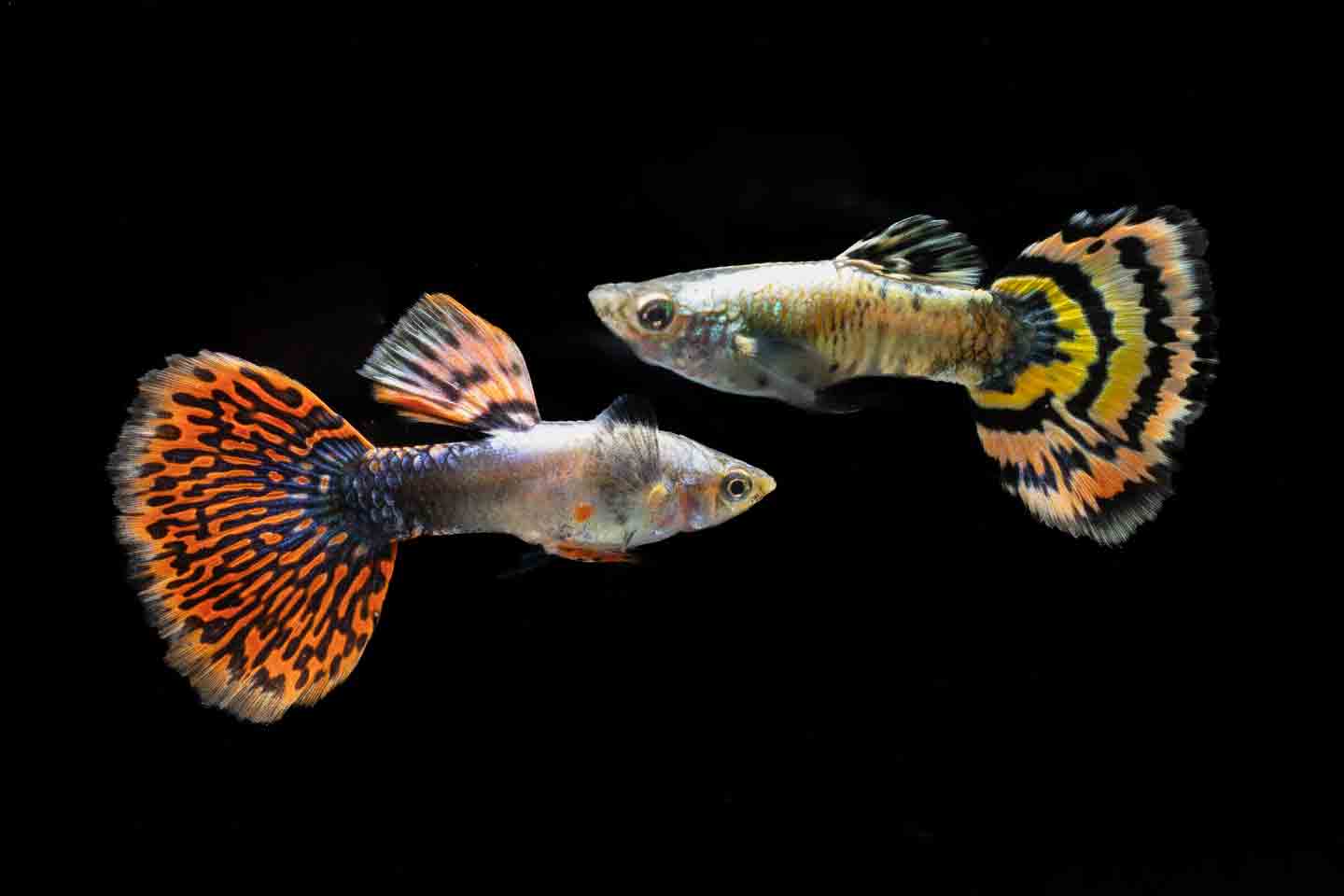
2Fancy Guppy
- Scientific name: Poecilia reticulata
- Adult size: 1-2 inches
- Life expectancy: 3-5 years
- Best tank mates: Small, peaceful fish
Known for their bright colors and prolific breeding habits, fancy guppies make stunning additions to the community tank. Guppies aren’t schooling fish, so they don’t need to be kept in groups of their own kind, but they’re best kept with other small aquarium fish.
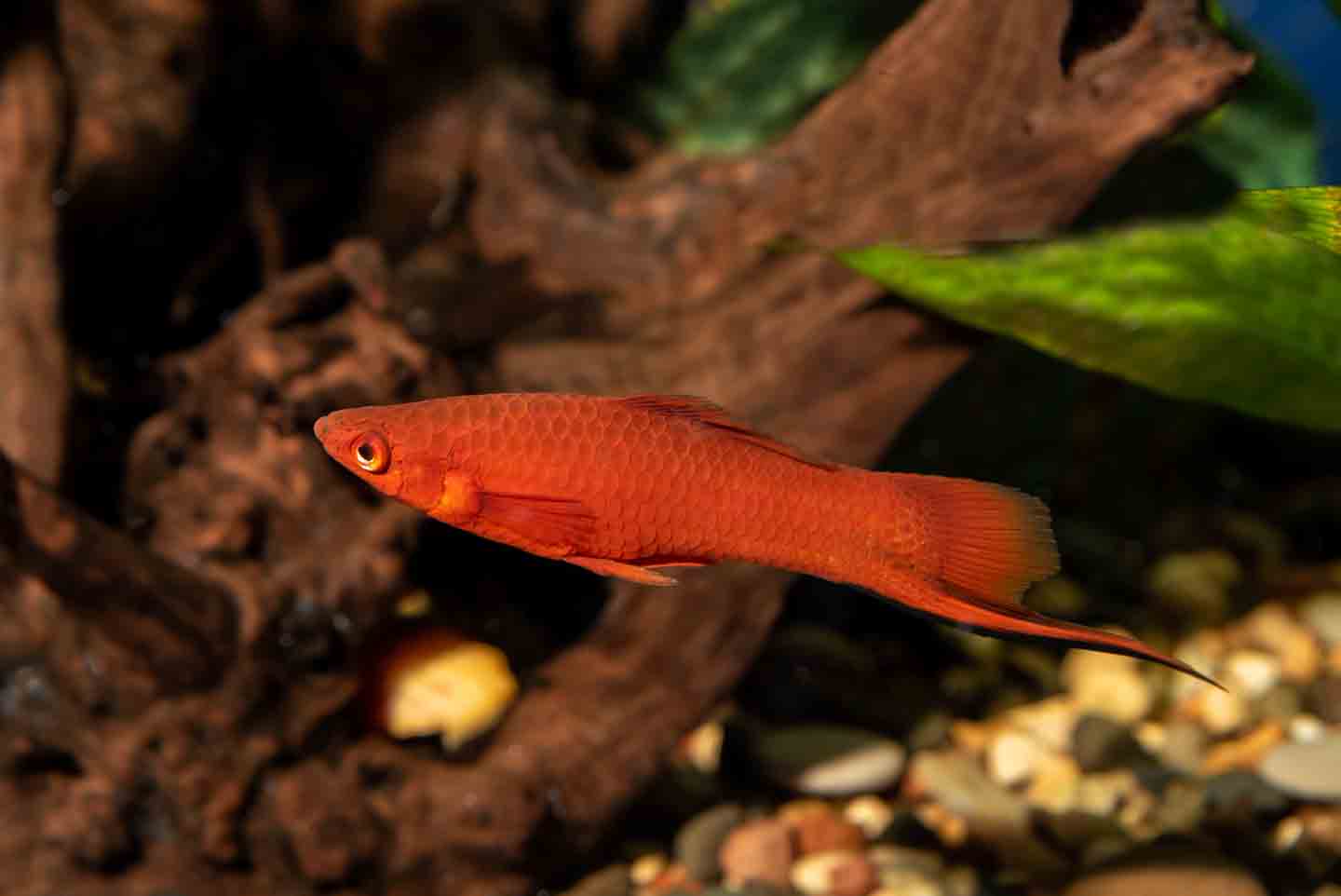
3Swordtail
- Scientific name: Xiphophorus spp.
- Adult size: 3-4 inches
- Life expectancy: 3-5 years
- Best tank mates: Small, peaceful fish
Swordtails come in a wide range of colors and patterns that include spots, stripes and splotches. Like guppies, swordtails are livebearers that can easily overpopulate a tank, if you’re not careful. Mature males are easy to distinguish from females because they grow a swordlike extension on the caudal fin (tail).
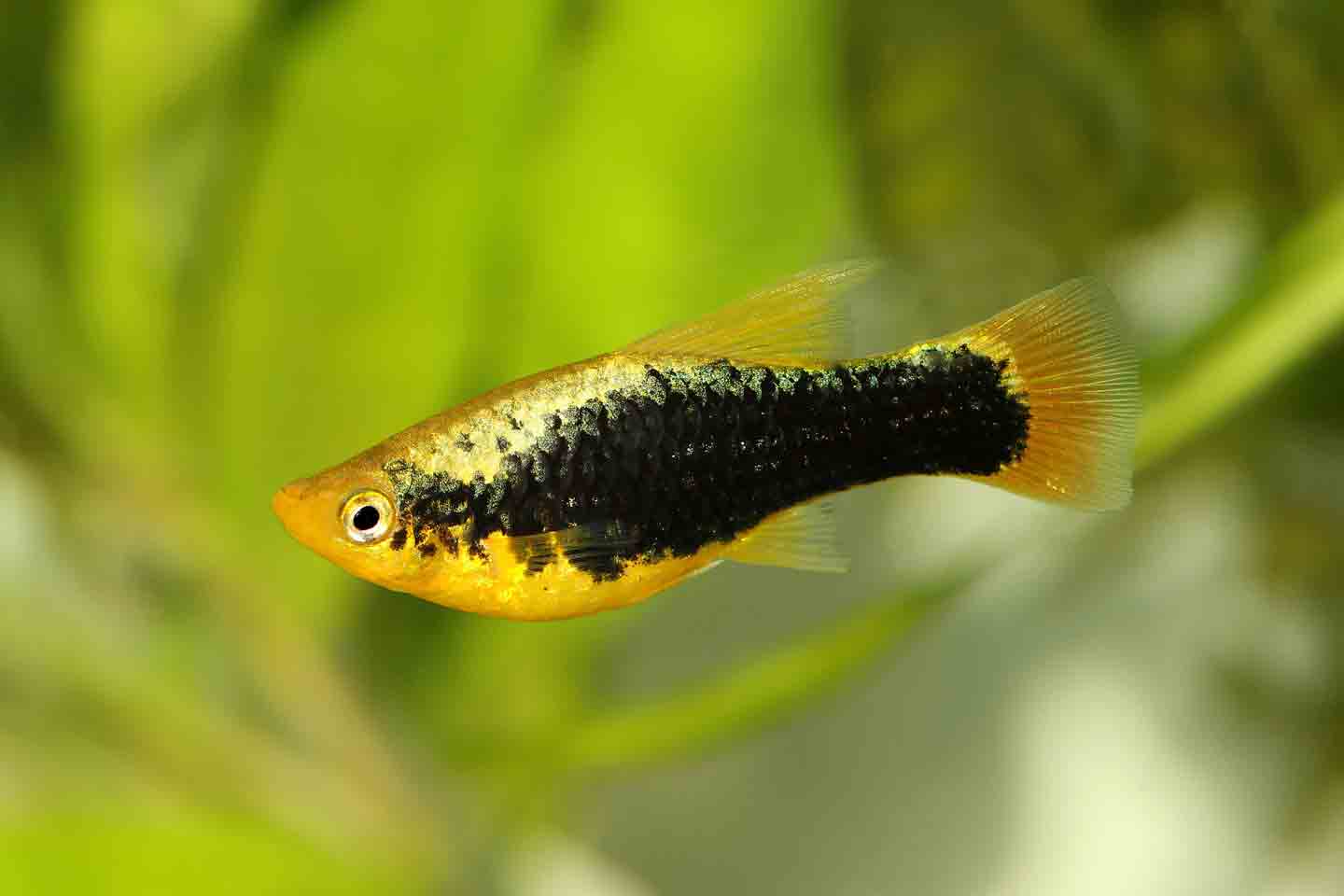
4Platy
- Scientific name: Xiphophorus spp.
- Adult size: 3-4 inches
- Life expectancy: 3-5 years
- Best tank mates: Small, peaceful fish
Platies belong to the same genus as swordtails, they just lack the swordlike tail extension. These livebearers come in all colors of the rainbow and are generally named for their color or pattern. The wagtail platy is solid-colored with black fins, for example. Other patterns include salt-and-pepper, variegated and tuxedo.
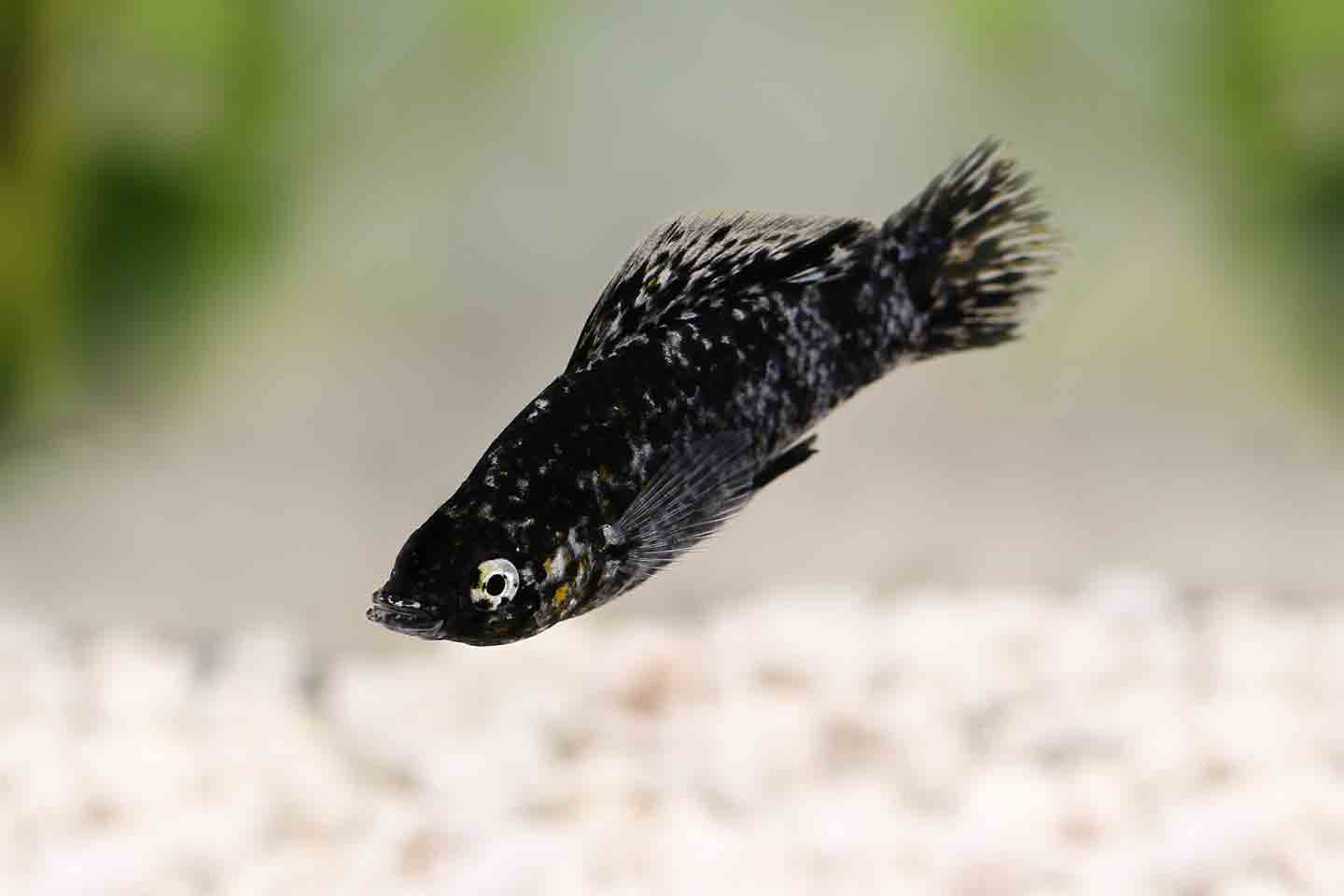
5Molly
- Scientific name: Poecilia sphenops
- Adult size: 3-5 inches
- Life expectancy: 5 years
- Best tank mates: Small, peaceful fish
Similar in size and body shape to swordtails and platies, mollies exhibit an array of colors. Like betta fish, mollies have also been selectively bred for several different fin types. For example, sailfin mollies have long, high caudal fins. Though generally hardy, mollies can be challenging for beginner aquarists because they prefer hard, alkaline water conditions.
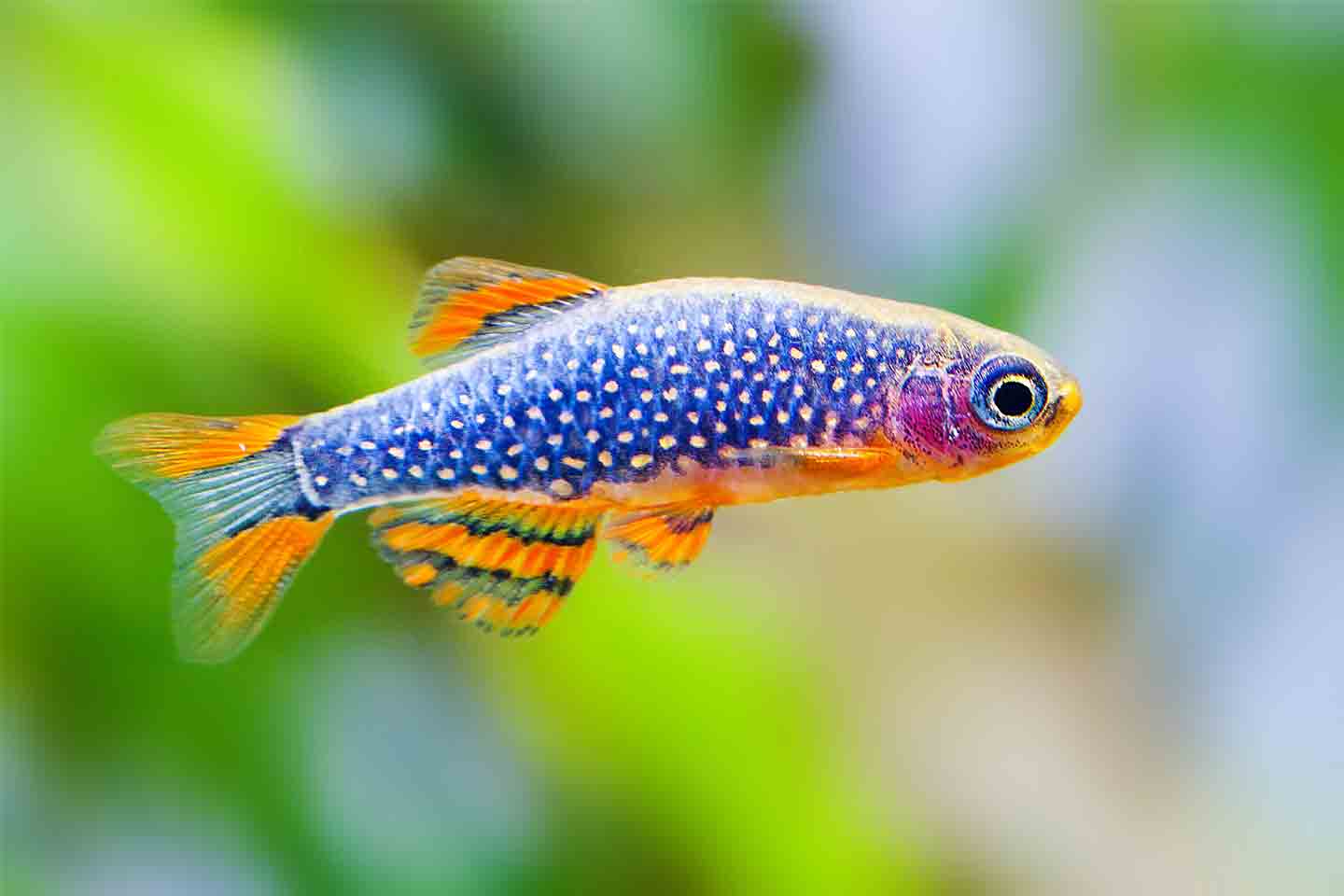
6Celestial Pearl Danio
- Scientific name: Microrasbora sp. ‘Galaxy’
- Adult size: 1 inch
- Life expectancy: 3-5 years
- Best tank mates: Small community fish or freshwater shrimp
Also known as the galaxy rasbora—named for the starlike spots covering their bodies—the celestial pearl danio (CPD) is a relatively new entrant to the aquarium hobby. Males are bright blue with red fins, while females are a duller blue-green. CPDs are considered nano fish. Because they’re so tiny, these fish require small foods like baby brine shrimp and micropellets.
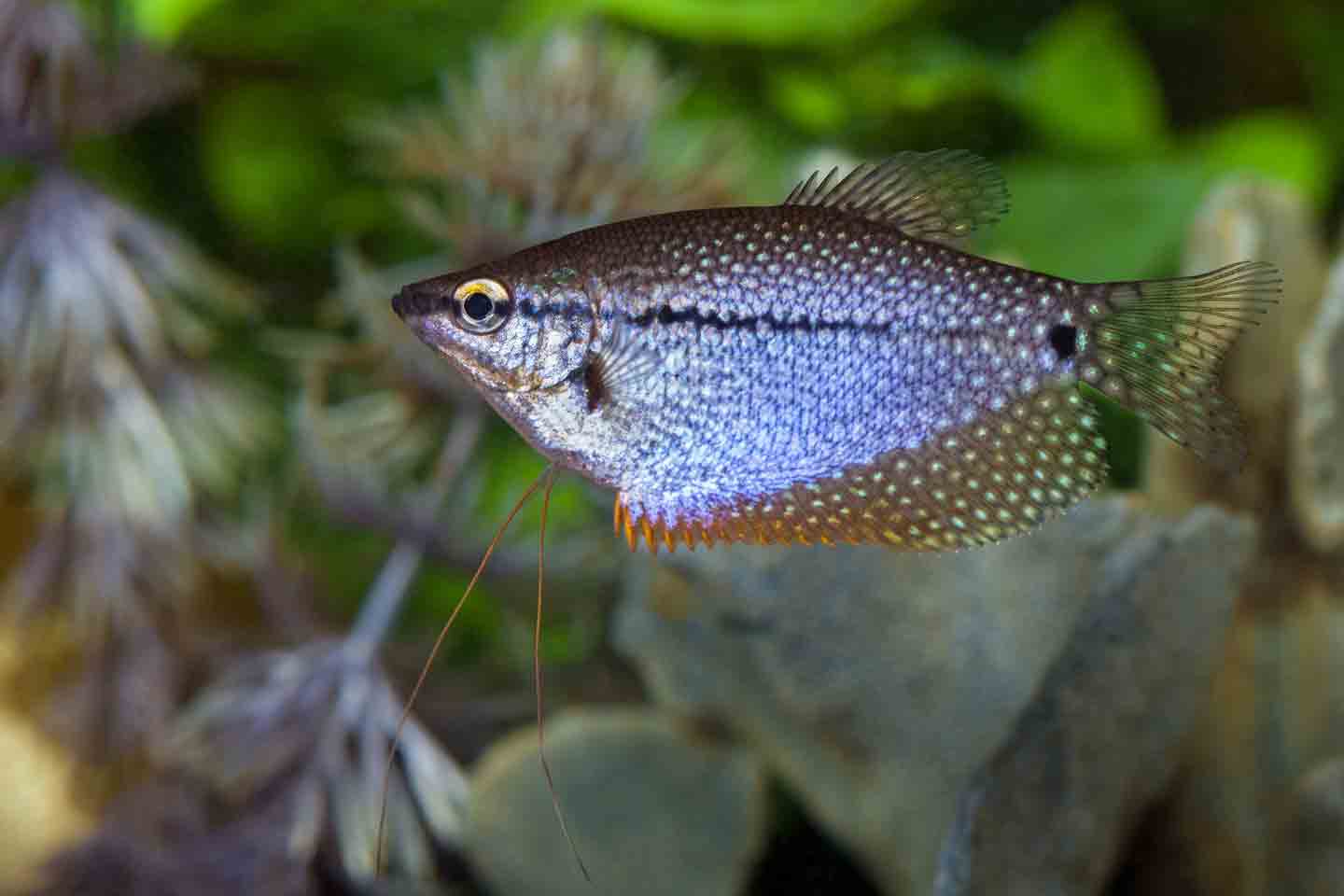
7Pearl Gourami
- Scientific name: Trichogaster leeri
- Adult size: 3-5 inches
- Life expectancy: 4-5 years
- Best tank mates: Small to medium community fish
One of the hardiest gourami species, the pearl gourami is beginner-friendly and adaptable to a wide range of conditions. These fish have a brown-silver body covered with a pearl-like pattern. Pearl gouramis are peaceful fish who will thrive in a community planted tank with other tropical species.
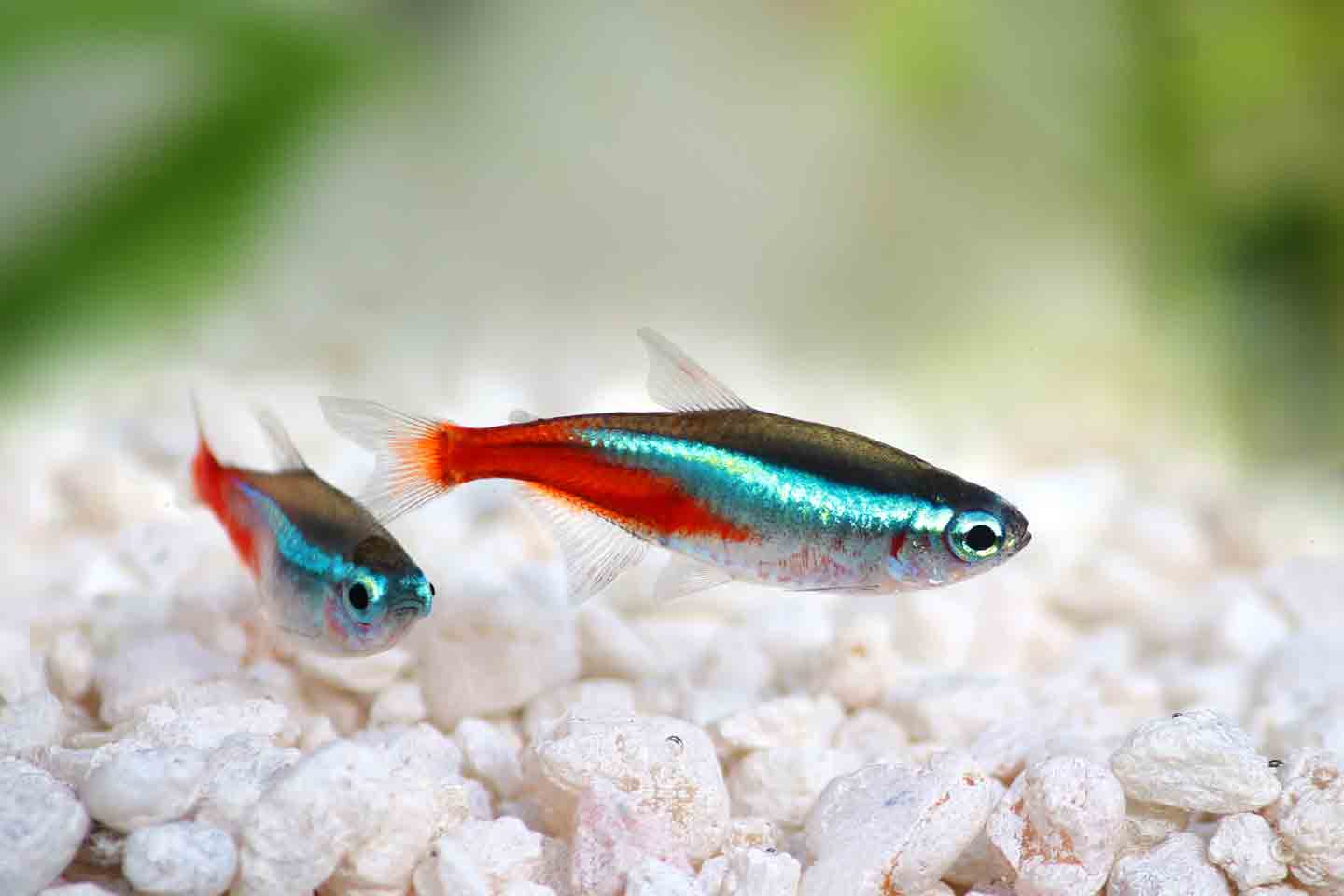
8Neon Tetra
- Scientific name: Paracheirodon innesi
- Adult size: 1.5 inches
- Life expectancy: 2-5 years
- Best tank mates: Small, peaceful fish
One of the most popular smaller fish for freshwater aquariums, neon tetras are easily identified by the iridescent blue and red stripes running along the body. Neon tetras prefer soft, acidic water and should be kept in groups of at least six. Ideal conditions include plenty of aquarium plants and driftwood decorations to mimic their native Amazonian habitat.
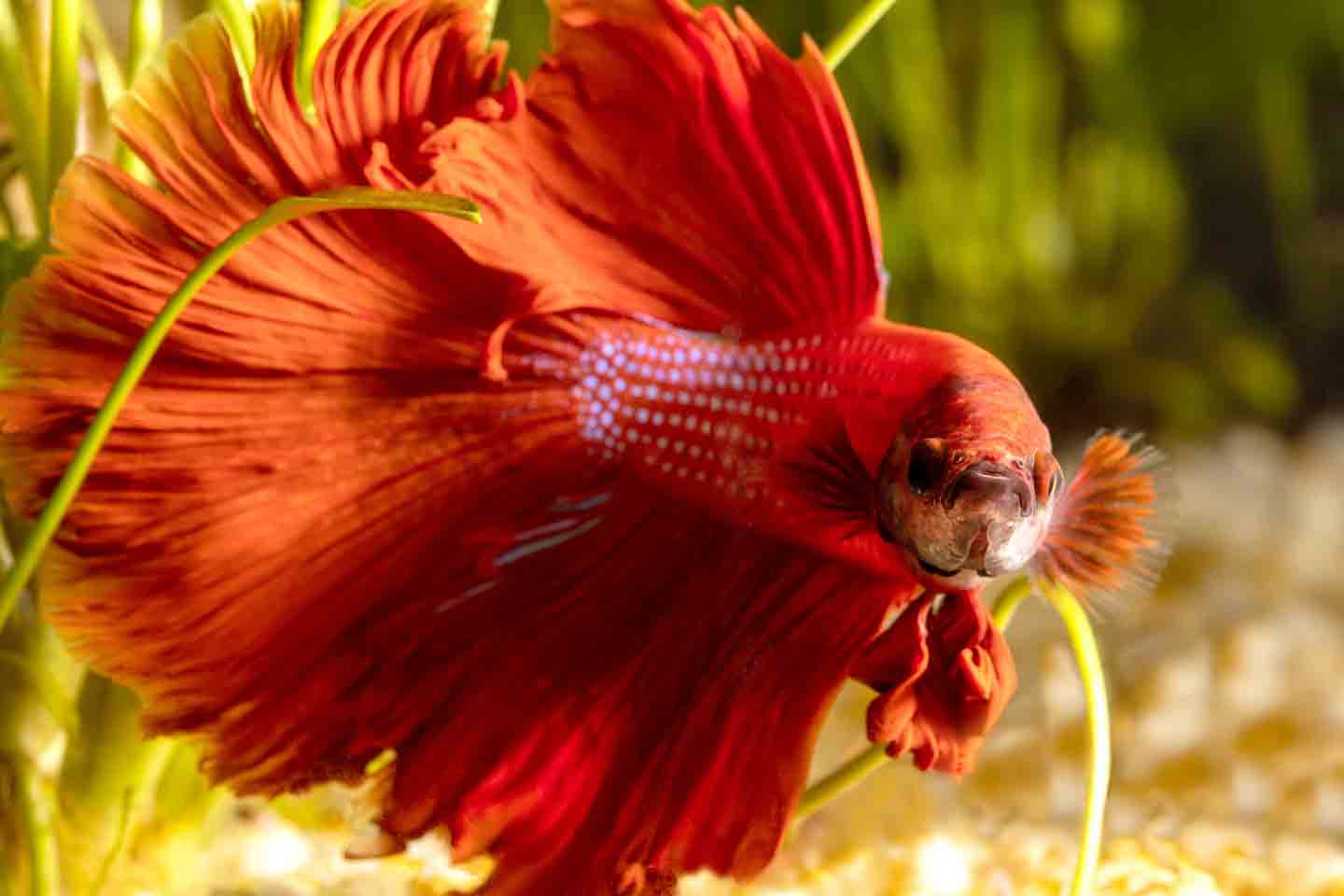
9Betta Fish
- Scientific name: Betta splendens
- Adult size: 3 inches
- Life expectancy: 2-5 years
- Best tank mates: Active, non-aggressive species
Seen in a wide array of colors, patterns and fin types, bettas make good beginner fish with a few caveats. Male bettas are notoriously aggressive fish and should be kept alone. Depending on your tank size, a single male or group of female bettas may get along with small to medium-sized active, non-aggressive fish or bottom-feeders.
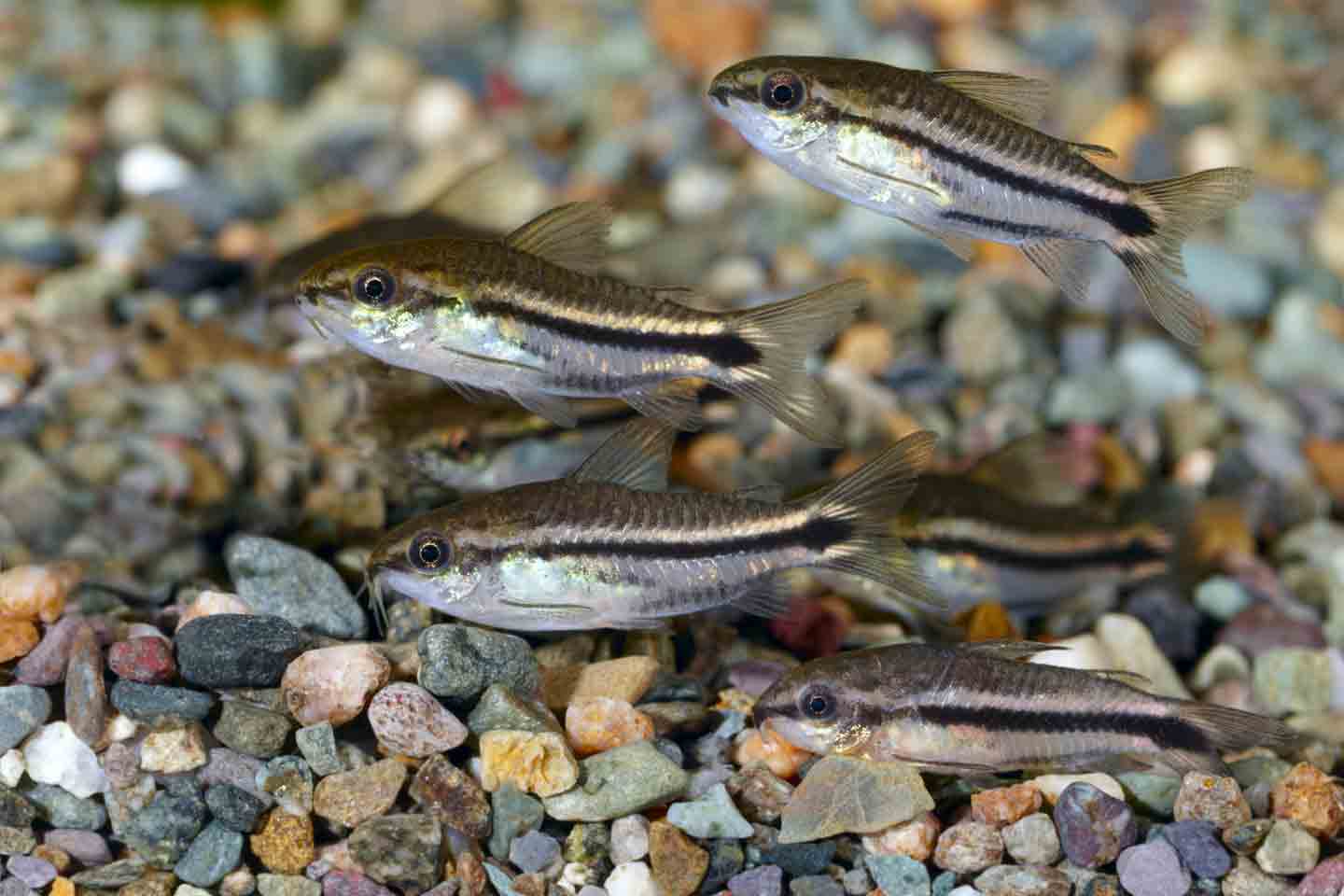
10Pygmy Corydoras
- Scientific name: Corydoras pygmaeus
- Adult size: 1 inch
- Life expectancy: 3-5 years
- Best tank mates: Peaceful community fish
Like other cory catfish, pygmy cories are peaceful bottom-dwellers who do well in community tanks. They help keep water quality high by eating leftover fish food. Their size and lower waste output make them a better fit for small tanks than suckermouth catfish like plecos. Pygmy cories can be kept in small groups but will thrive in a heavily planted tank in a group of 8-12.
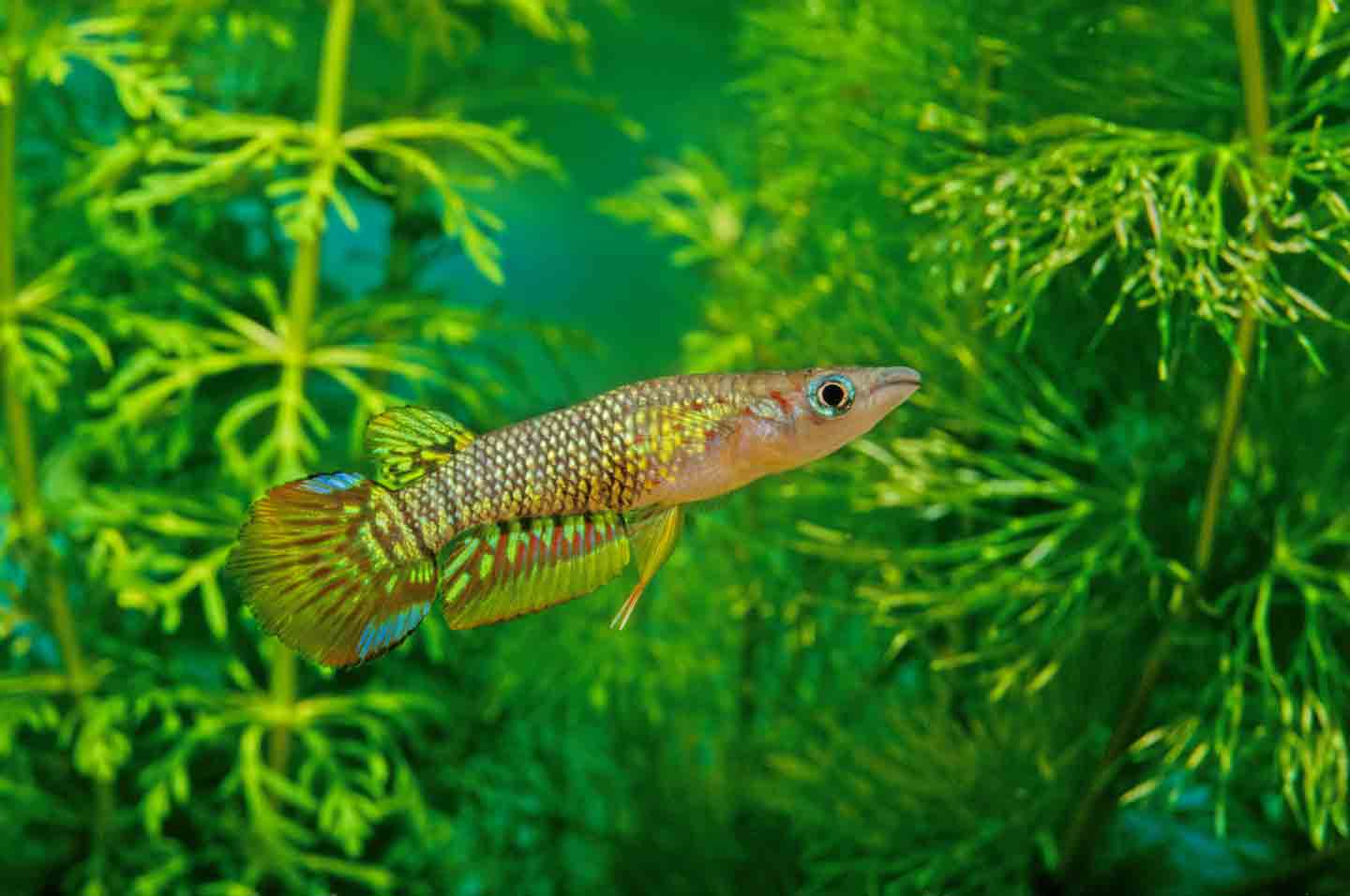
11Golden Wonder Killifish
- Scientific name: Aplocheilus lineatus
- Adult size: 3-4 inches
- Life expectancy: 2-5 years
- Best tank mates: Peaceful middle- and bottom-dwellers
An ornamental variant of the striped panchax, the golden wonder killifish is vibrant yellow with hints of iridescent blue-green. Killifish typically occupy the upper level of the tank, so ideal tank mates include middle- and bottom-dwelling species. Fishkeepers should exercise caution when keeping killifish with microrasboras or other very small fish, as they are a predatory species. These fish are best kept in small groups in a tank with a tight-fitting lid—they are known to jump.
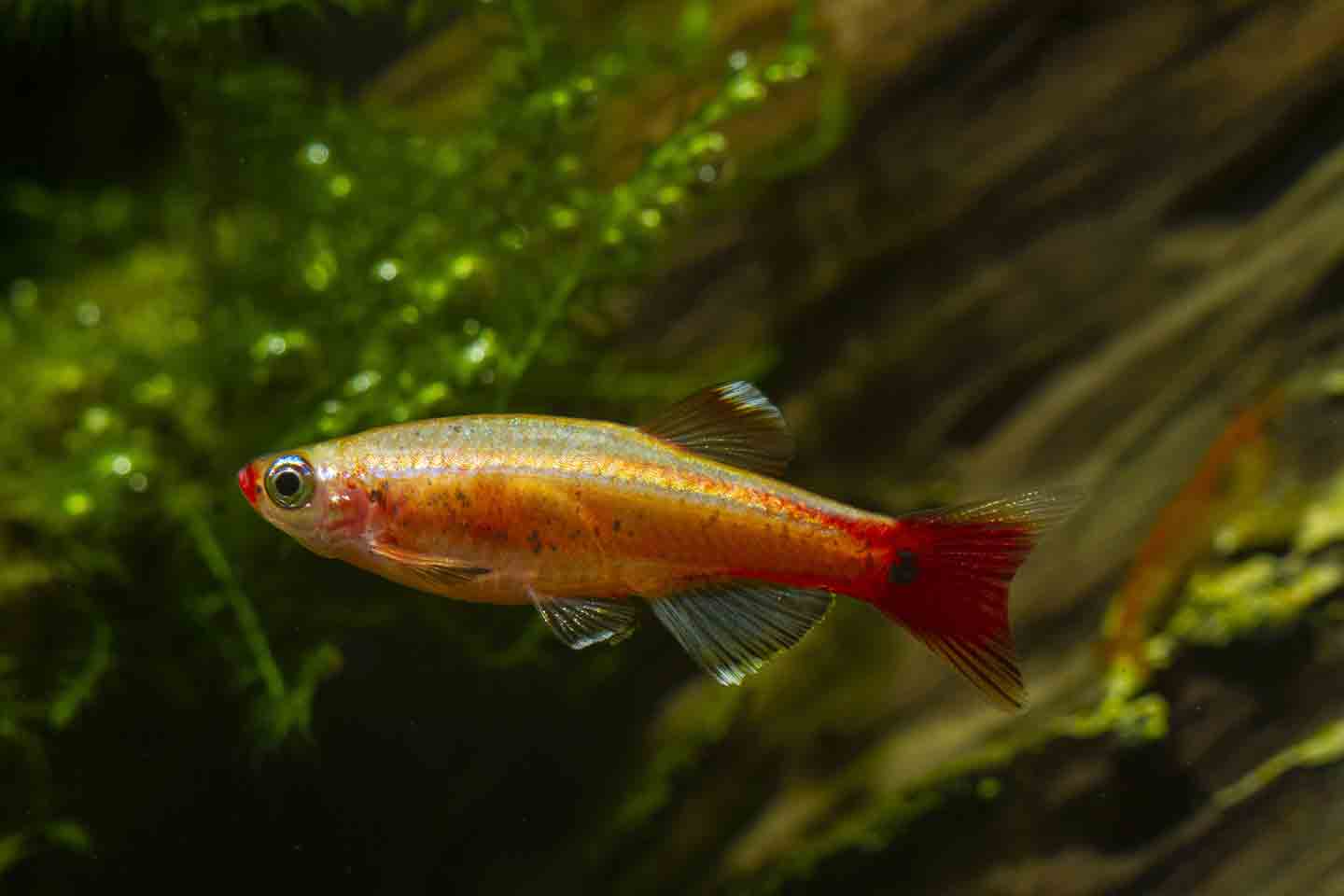
12White Cloud Mountain Minnow
- Scientific name: Tanichthys albonubes
- Adult size: 1.5 inches
- Life expectancy: 3-5 years
- Best tank mates: Peaceful community fish who thrive in cool water
Beyond the realm of tropical fish, some coldwater fish such as white cloud mountain minnows are very beginner-friendly. Unlike goldfish—the quintessential cold-water species—white clouds stay small, so you won’t need to upgrade to a larger tank down the line. White clouds will thrive in large groups in a tank with plenty of swimming space where temperatures don’t exceed 72℉ahrenheit.
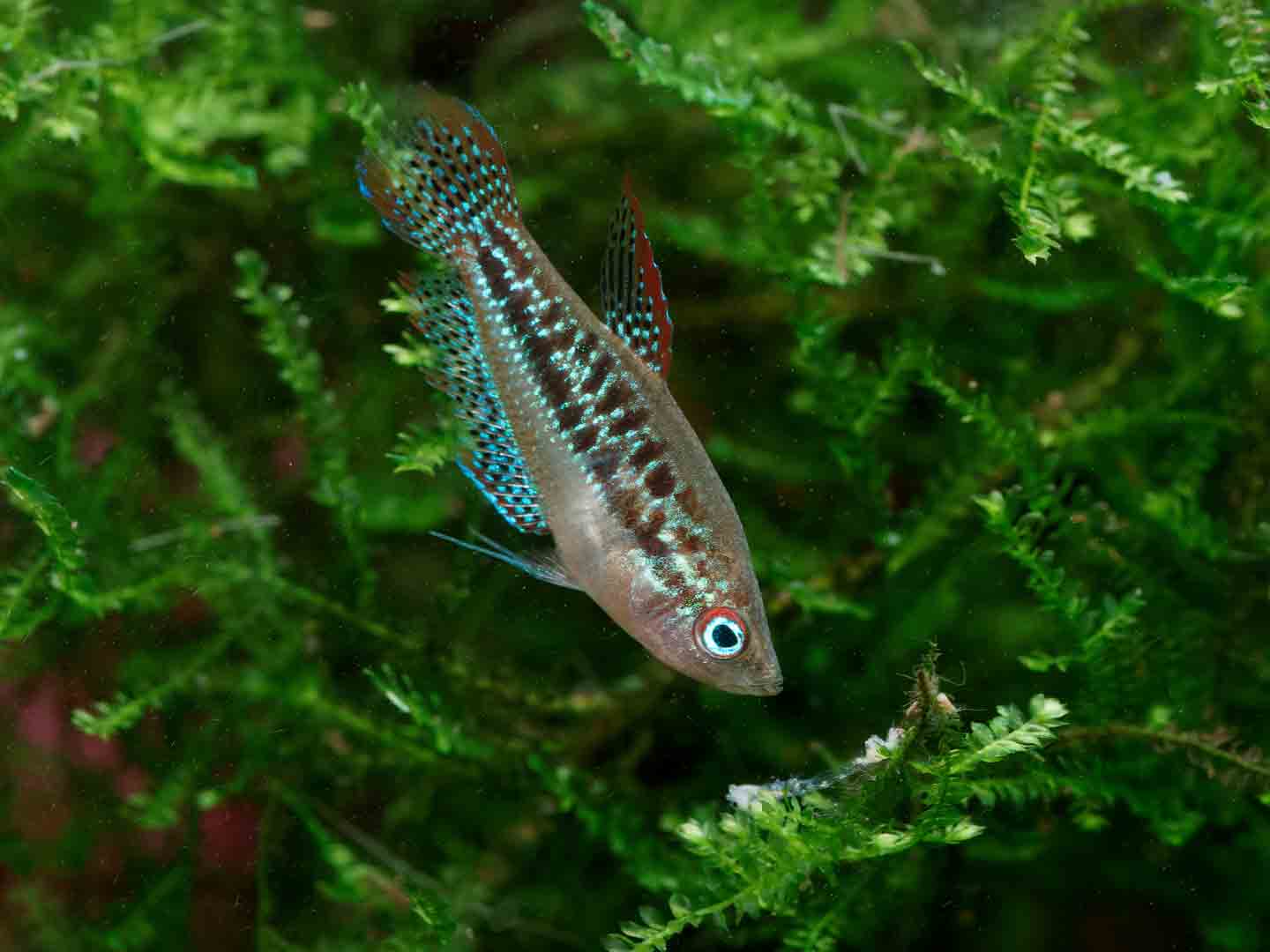
13Pygmy Gourami
- Scientific name: Trichopsis pumila
- Adult size: Under 2 inches
- Life expectancy: 3-5 years
- Best tank mates: Peaceful nano fish or bottom-dwellers
Also known as the sparkling gourami or sometimes the croaking gourami, this diminutive species is one of the smallest labyrinth fishes. Like betta fish and other gouramis, they have a lunglike organ that enables them to breathe air from the surface. Pygmy gouramis are brown and covered in light blue spots. In the right light, their reflective scales appear to shimmer.

14Zebra Danio
- Scientific name: Danio rerio
- Adult size: 2 inches
- Life expectancy: 4-5 years
- Best tank mates: Coolwater community fish
Zebra danios have dark-blue stripes running the length of the body, through the fins. They’re sold in short- and long-finned variants, as well as a fluorescent GloFish variant. Because zebra danios don’t require tropical temperatures, they are well-suited to cool-water, community tanks. They’re very active fish and appreciate having open space to swim.
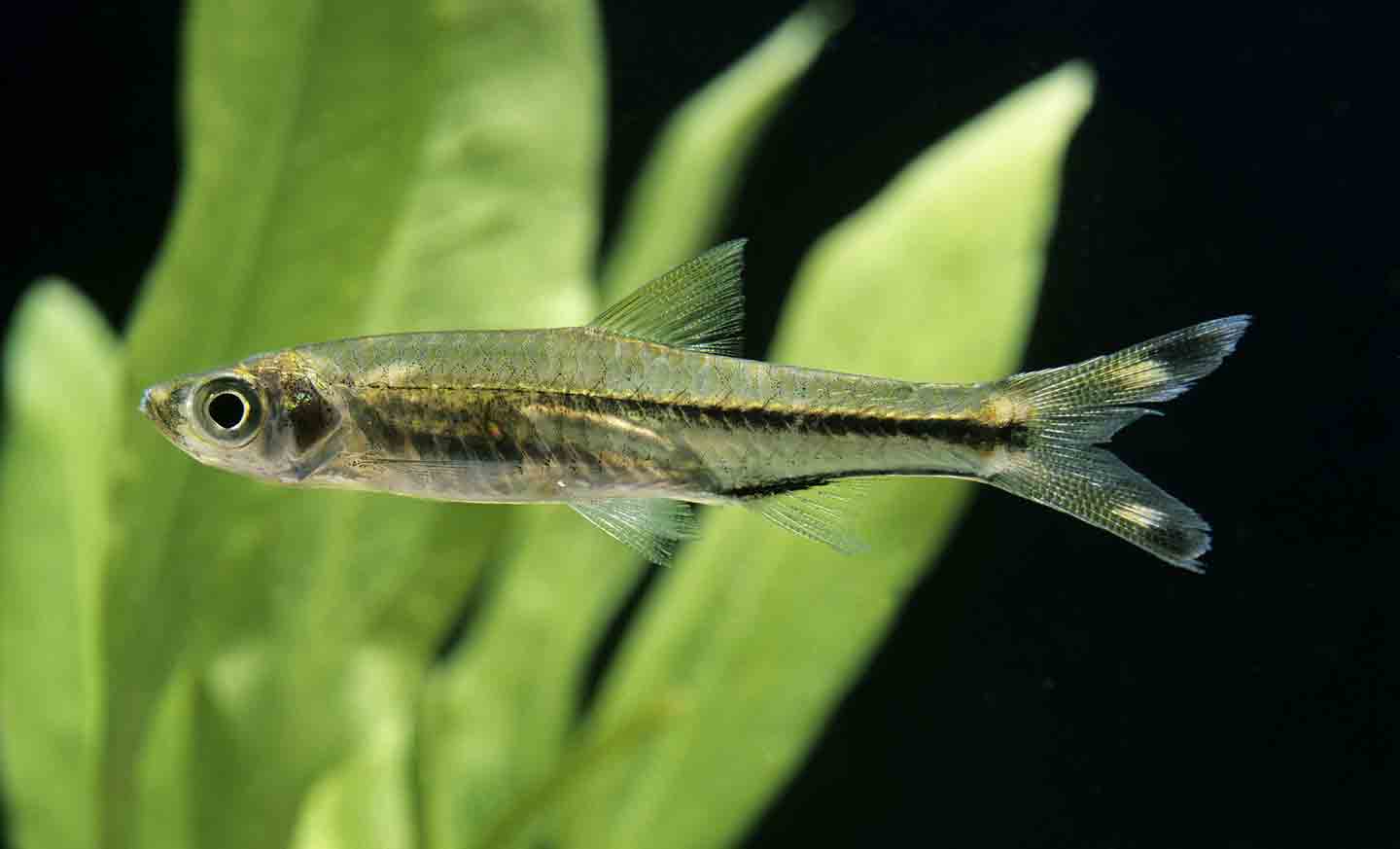
15Scissortail Rasbora
- Scientific name: Rasbora trilineata
- Adult size: 3-4 inches
- Life expectancy: 5 years
- Best tank mates: Active, community fish
Also known as the three-lined rasbora, this species is silver with a dark bar pattern on its scissorlike tail. Scissortail rasboras are small and active—they make good tank mates for other rasboras, tetras and even livebearers. Filtration is especially important for these fish, as they need high water quality and movement.
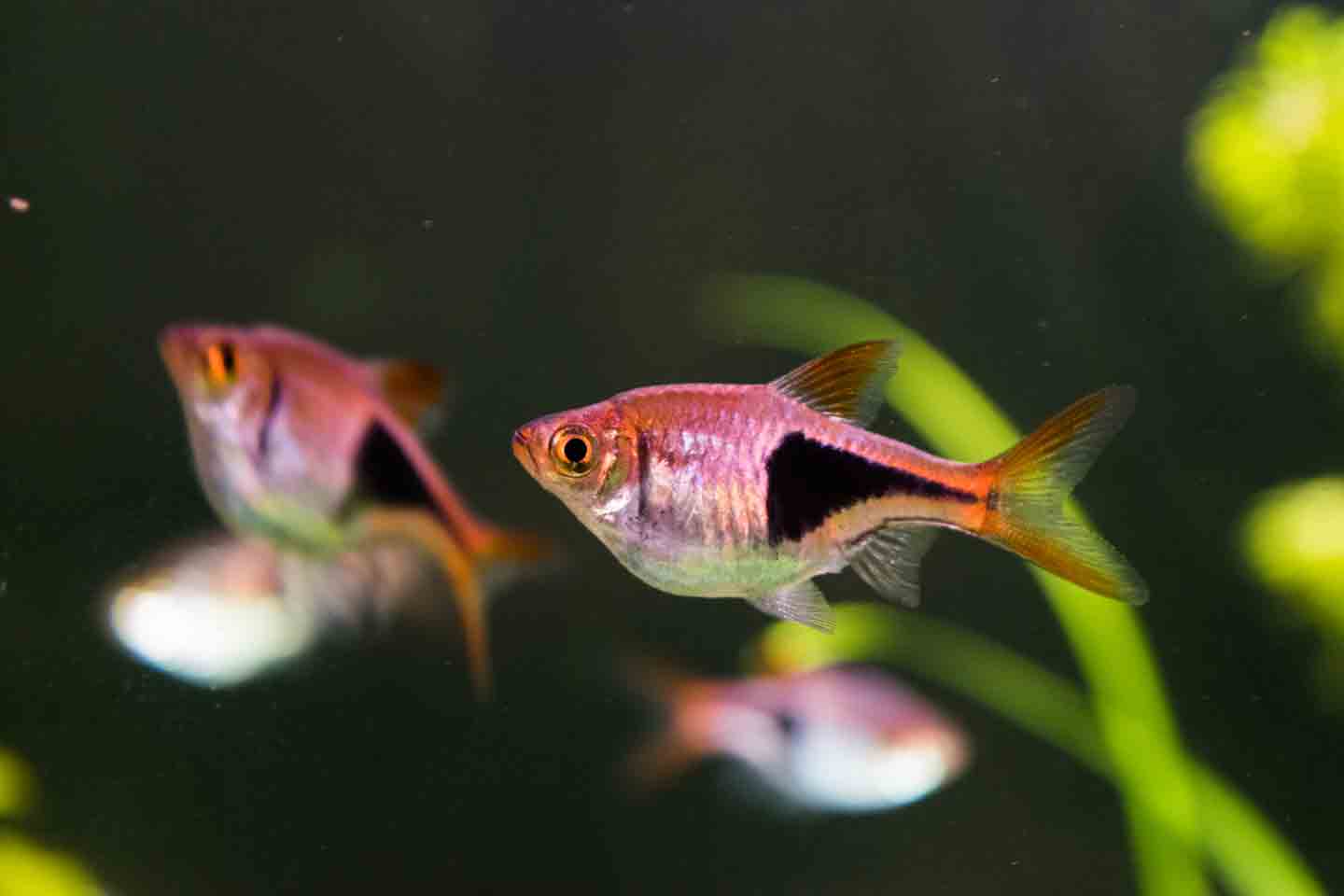
16Harlequin Rasbora
- Scientific name: Trigonostigma heteromorpha
- Adult size: 1-2 inches
- Life expectancy: 4-6 years
- Best tank mates: Peaceful community fish
With their red color and distinctive wedge-shaped marking, the harlequin rasbora is one of the most recognizable rasbora species. As shoaling fish, they’re best kept with 8-10 of their own species. Their peaceful nature makes them a good fit for most community tanks. They won’t nip at the fins of angelfish or quarrel with smaller fish.
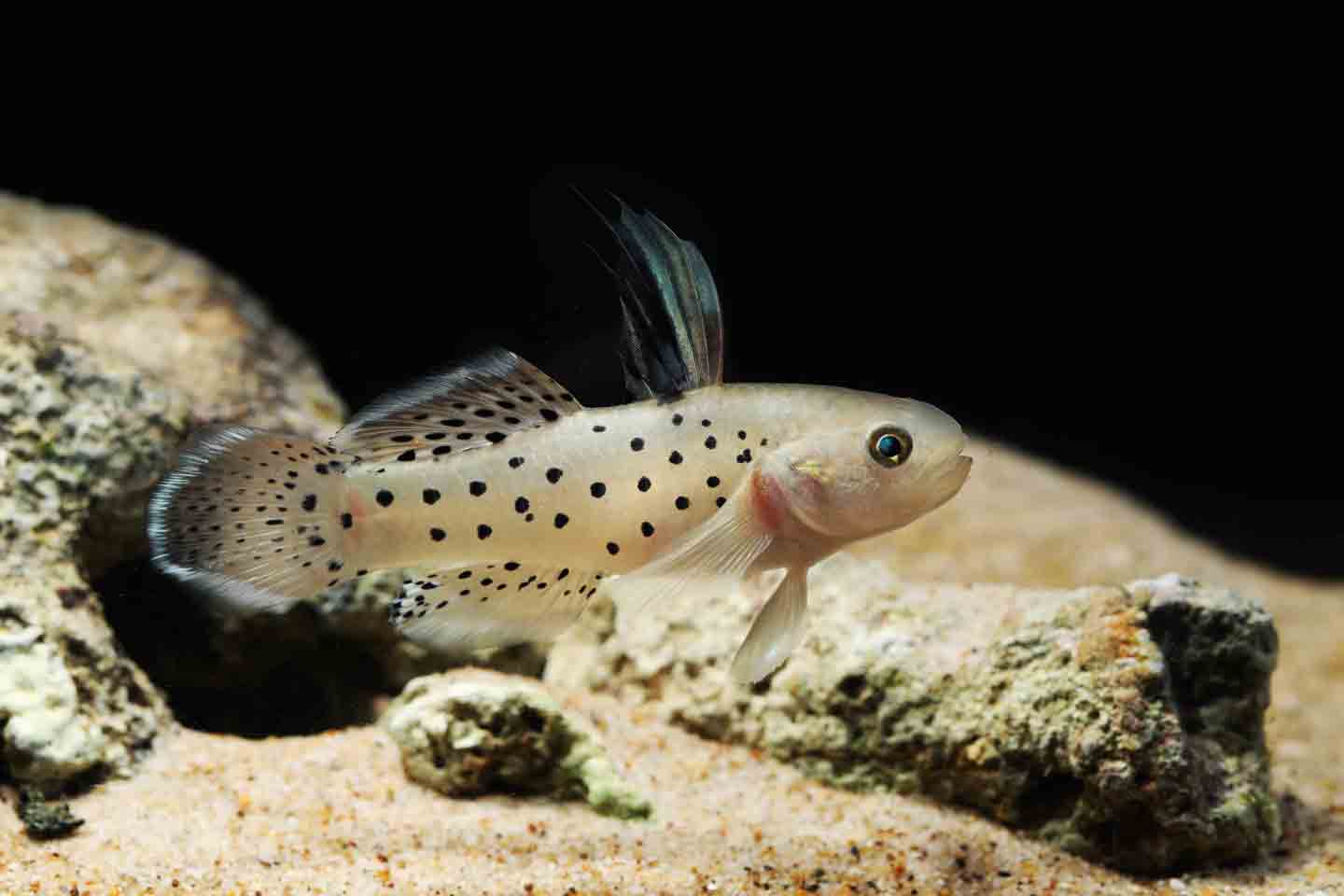
17Knight Goby
- Scientific name: Stigmatogobius sadanundio
- Adult size: 3-4 inches
- Life expectancy: 3-5 years
- Best tank mates: Peaceful middle- and upper-dwelling fish
Experienced aquarium hobbyists looking to make a unique addition to their tank might consider this bottom-dwelling species. Knight gobies are tolerant of a wide range of water parameters, but do best in a strictly freshwater environment. Because they can be territorial, knight gobies should be kept singly and, ideally, as the only bottom-dweller in a small tank.
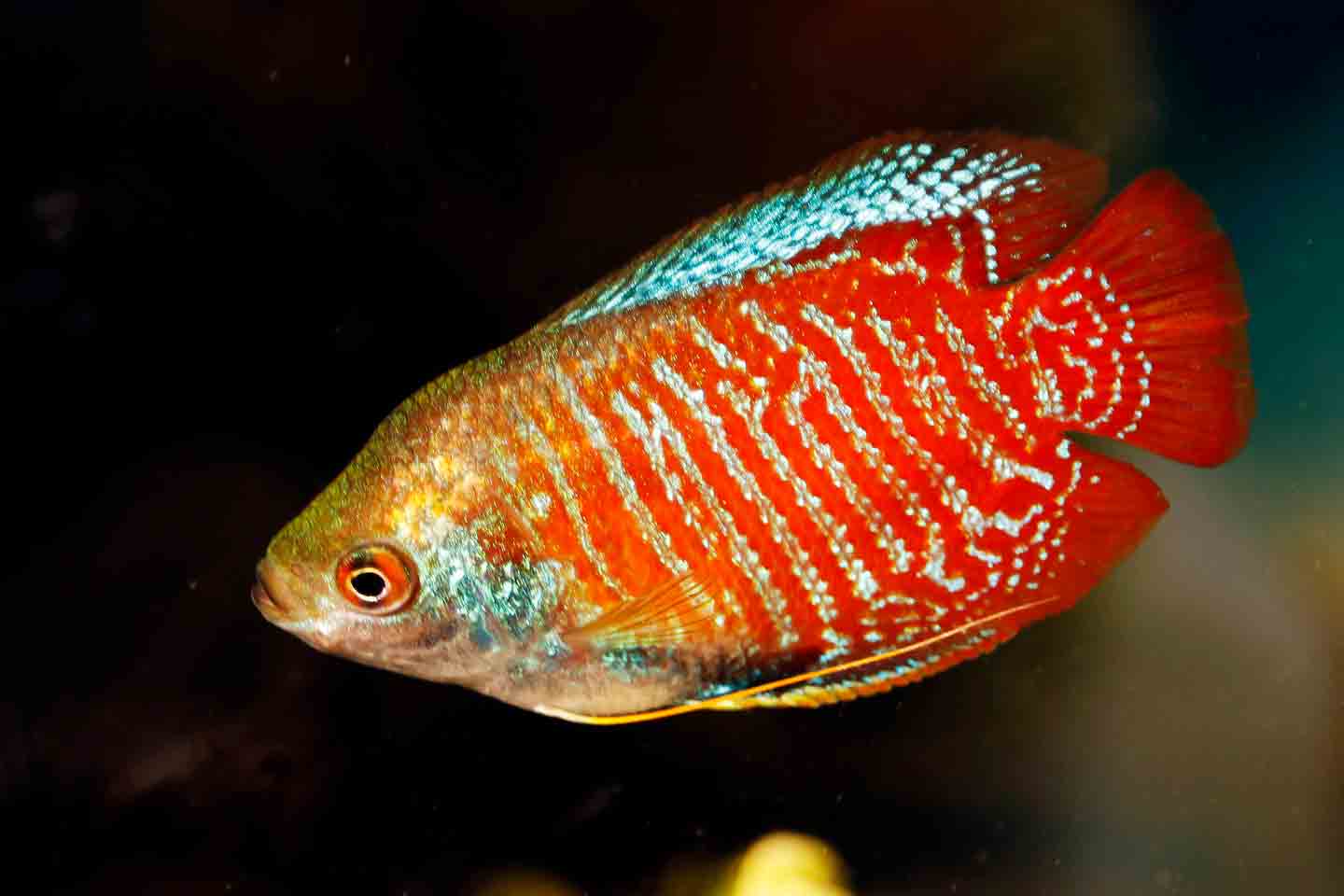
18Dwarf Gourami
- Scientific name: Trichogaster lalius
- Adult size: 3 inches
- Life expectancy: 4-6 years
- Best tank mates: Peaceful community fish
Growing up to 3 inches, the dwarf gourami is a popular beginner fish. Its vibrant red striping over an iridescent blue body makes it a striking addition to the community tank. Because males tend to be territorial, however, it’s best to keep them singly with peaceful community fish. A varied diet that includes frozen foods like bloodworms will help enhance this species’ coloration.

19Cherry Barb
- Scientific name: Puntius titteya
- Adult size: 2 inches
- Life expectancy: 4-6 years
- Best tank mates: Peaceful community fish
Another colorful option for community tanks, cherry barbs are brown with red or orange highlights. During spawning season, however, males turn bright red. Cherry barbs should be kept in small schools and do well with tetras and most other barbs. They can be shy around large or aggressive fish, however, so stick to peaceful community species.
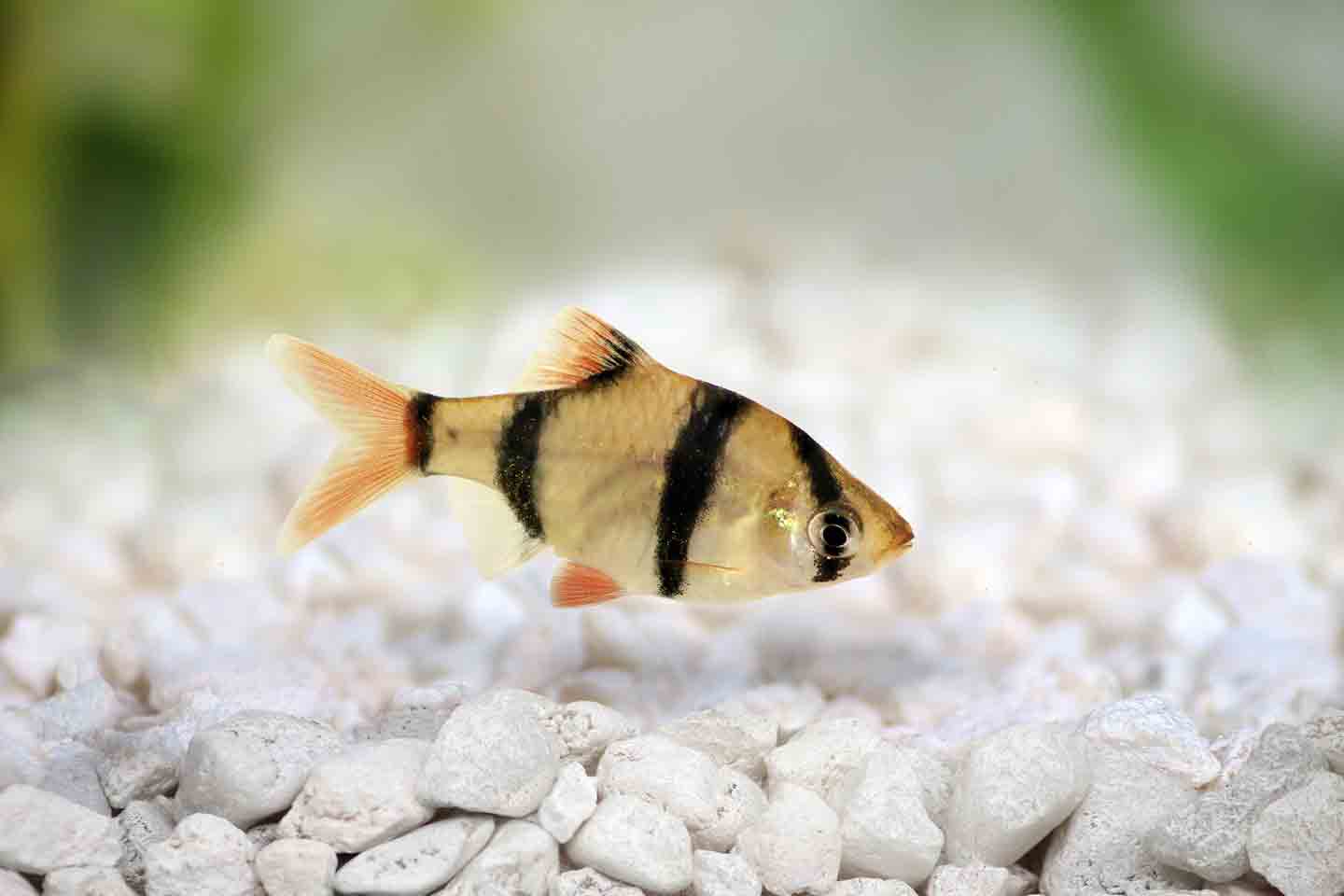
20Tiger Barb
- Scientific name: Puntigrus tetrazona
- Adult size: 3 inches
- Life expectancy: 5-10 years
- Best tank mates: Active community species
A little larger than their cherry cousins, tiger barbs exhibit dark, vertical striping with bright orange on the tips of their fins and nose. Though these are small aquarium fish, they are best kept in groups of six or more, and they’re very active. A 29-gallon aquarium is the minimum recommended size. Tiger barbs can be kept in community tanks, but they may bully slower fish and tend to get nippy with long-finned fish.

21Kuhli Loach
- Scientific name: Pangio kuhlii
- Adult size: 3-4 inches
- Life expectancy: 10 years
- Best tank mates: Peaceful community fish
Sometimes called eel loaches, kuhli loaches have a slender, snakelike body. Kuhli loaches are hardy in a wide range of parameters, but they tend to be pretty shy. They like to burrow, so choose soft substrate to avoid damaging their sensitive barbels. Aquascaping is important for this species as well—they need plenty of places to hide.
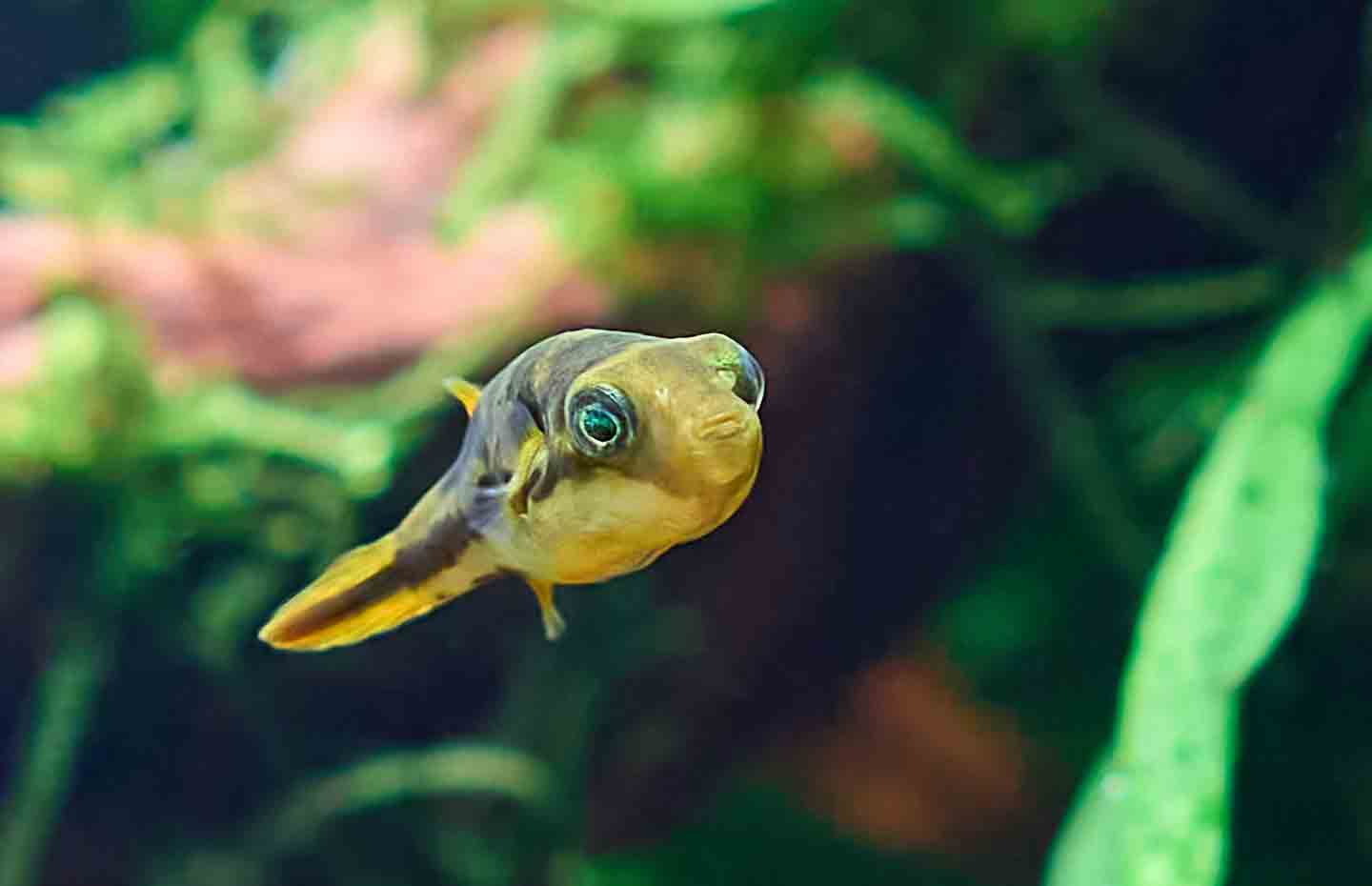
22Dwarf Pufferfish
- Scientific name: Carinotetraodon travancoricus
- Adult size: Up to 1 inch
- Life expectancy: 2-4 years
- Best tank mates: Species-only
Also known as pea puffers, dwarf pufferfish are the smallest pufferfish in the world. They’re also one of the few that come exclusively from freshwater environments. Pea puffers stay small but they can be territorial, so they’re generally best kept alone. While the pea puffer’s tank requirements make them fairly beginner-friendly, their carnivorous eating habits can be a challenge. They may only accept live or frozen foods.
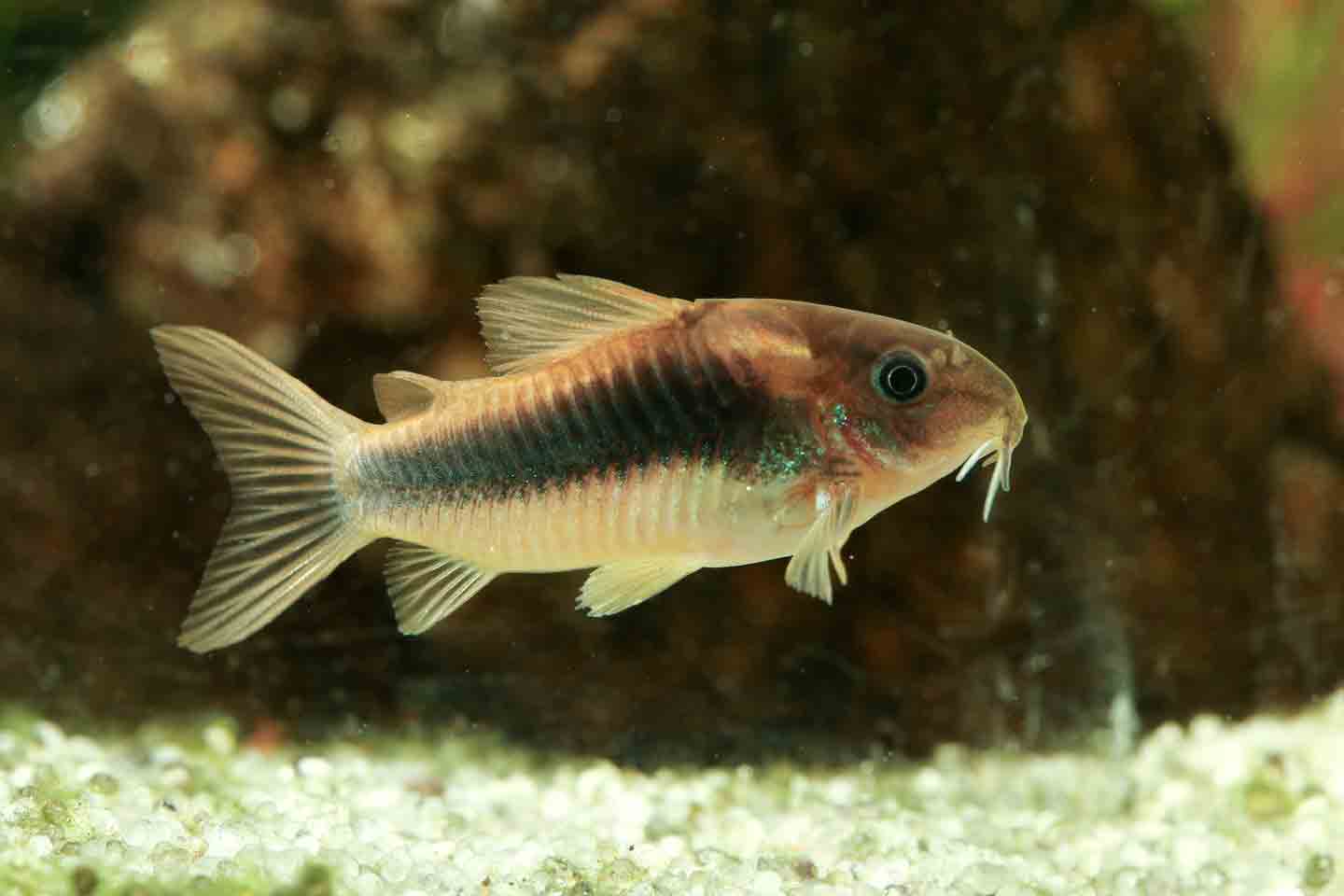
23Bronze Corydoras
- Scientific name: Corydoras aeneus
- Adult size: 2-3 inches
- Life expectancy: 5-10 years
- Best tank mates: Peaceful community fish
One of the first corydoras species introduced to the aquarium hobby, bronze corydoras are easy to find in pet stores. They’re a color variant of the green cory and have similar care requirements to other corydoras. Bronze cories are schooling fish, so keep at least five of them together. They tolerate a wide range of conditions and get along with most community species.
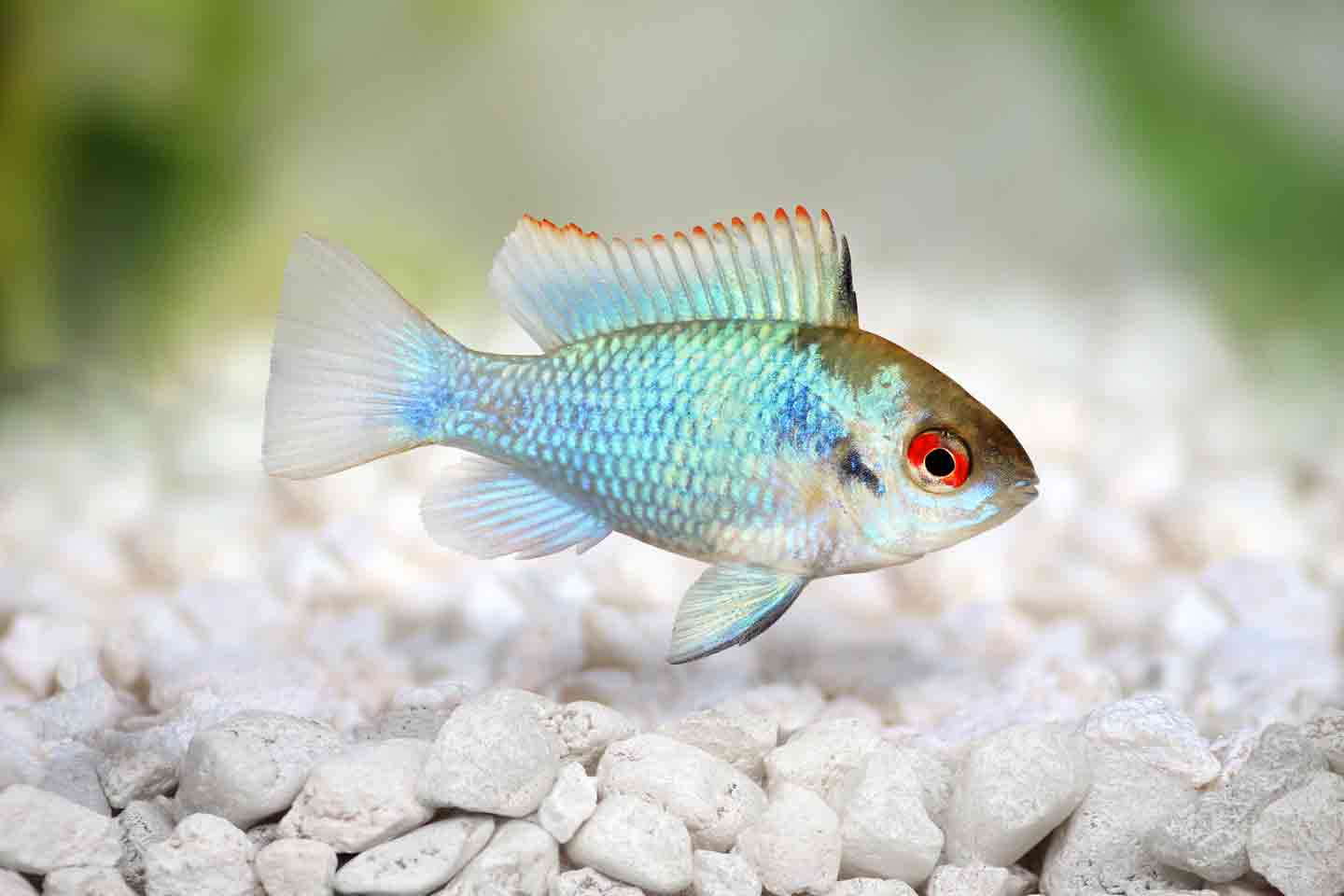
24German Blue Ram
- Scientific name: Mikrogeophagus ramirezi
- Adult size: 2.5 inches
- Life expectancy: 4 years
- Best tank mates: Tropical community fish
One of the few cichlids appropriate for smaller aquariums, the German blue ram is a striking fish. The body is silver-gold with black markings and vivid blue accents. While these cichlids stay small, they can be territorial with others of their kind. It’s best to keep them singly or in pairs in a community tank. If you do keep multiple German blue rams, space is key, and you’ll need to provide plenty of hiding places.
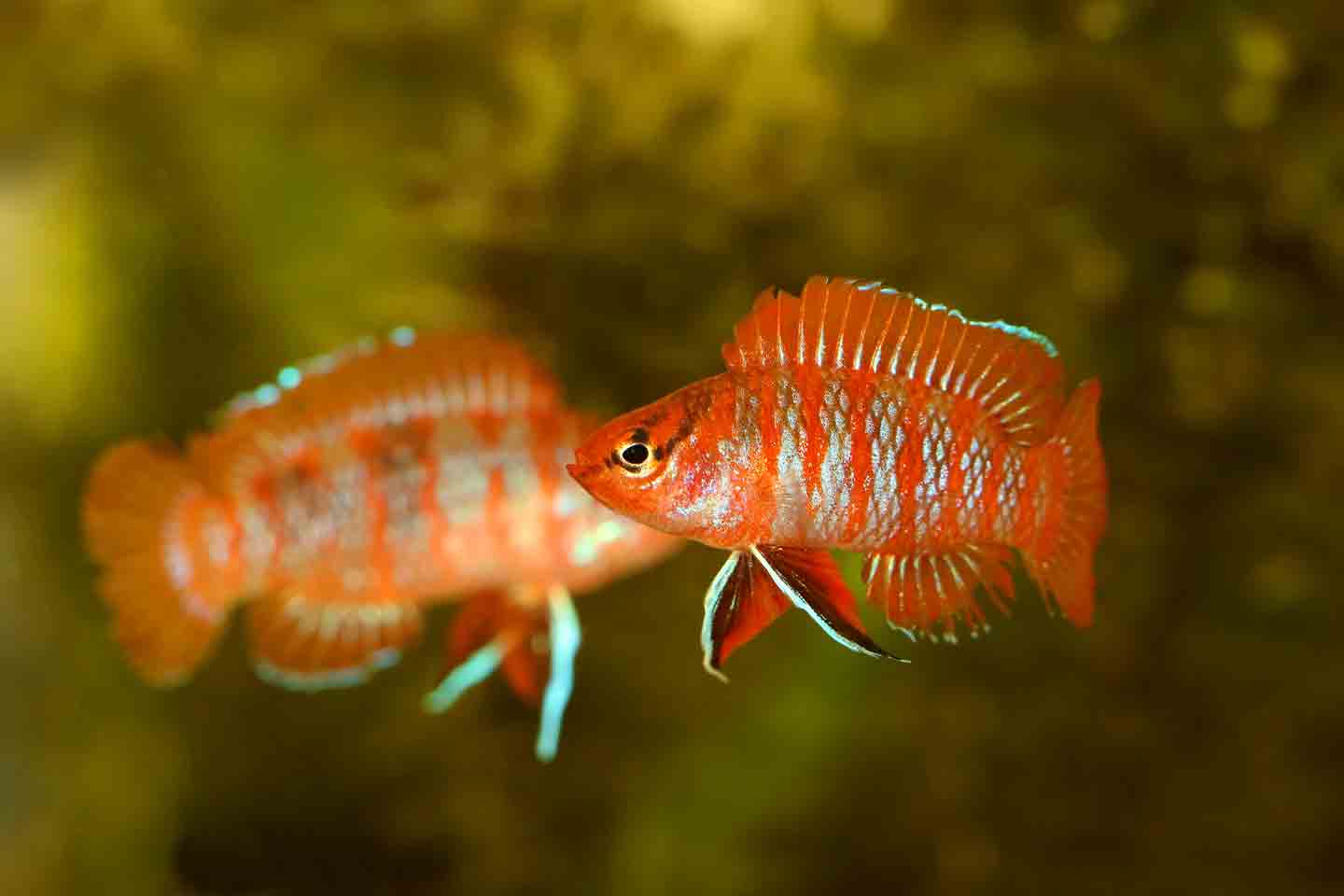
25Scarlet Badis
- Scientific name: Dario dario
- Adult size: Under 1 inch
- Life expectancy: 4-6 years
- Best tank mates: Species-only or peaceful nano fish
This nano fish is named for its brilliant red-orange striping. The scarlet badis is still fairly new to the aquarium hobby, so you might not find them at your local fish store. Their small size makes these fish a challenge for the typical community tank—they may be best suited to a species-only nano aquarium with plenty of live plants to hide in.
FAQs About Small Aquarium Fish
Q:What fish can go in a 1-gallon tank?
A:A 1-gallon tank is too cramped to comfortably accommodate most fish. Many small aquarium fish species are best kept in groups and require at least 5 gallons of tank volume. Very small tanks are a better fit for freshwater snails or shrimp.
Q:What are the smallest fish?
A:In the aquarium hobby, popular small fish include livebearers like guppies, platies, mollies, Endler’s livebearers and swordtails, as well as small tetras, danios and rasboras. Pygmy corydoras and otocinclus are some of the smallest catfish for freshwater aquariums.
Q:What are some good snail species for a freshwater aquarium?
A:Bladder snails and ramshorn snails are great for small freshwater tanks. If enough food is available, a single nerite snail can be kept in a nano tank at least 3 gallons in capacity. Mystery snails, rabbit snails and Malaysian trumpet snails need more room to forage—at least 5 gallons per snail and ideally more.
Keeping small aquarium fish healthy requires ongoing effort. Establish a maintenance routine for your fish tank early on, and observe your fish daily to get a feel for what’s normal and what isn’t. The sooner you intervene when problems arise, the better the outcome.
Learn about the signs of stress in aquarium fish.
Expert input was provided by Jessie Sanders, DVM, DABVP, owner of Aquatic Veterinary Services in Santa Cruz, California.
More Fish Friends
Share:
